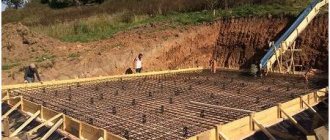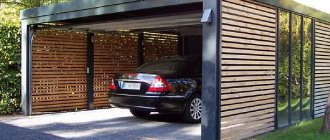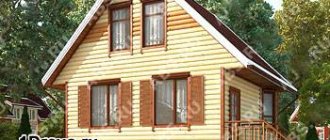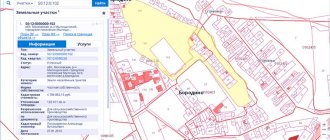Legal requirements
Currently, the current legislative framework in the country regulating private housing construction on dacha plots can be called quite liberal. This was a consequence of noticeable and significant changes introduced in recent years that expanded the rights of Russians on the issue under consideration.
For example, it is now permitted to erect buildings for permanent residence on dacha plots, which could not have been done literally 5-6 years ago. True, the current regulations introduce a number of serious restrictions. In particular, the area of dacha buildings, including all paths between them, should not exceed 30% of the total territory of the dacha land plot. This limitation is far from the only one.
An important condition, which is regulated by regulatory documents, is the correct location of the building on the land plot. Its boundaries should not be located outside the building area, which means a distance to the street of at least 5 meters. The minimum distance to the forest is 15 m, and to a separate tree or bush - 3 m and 1 m, respectively.
Another important point that the owner of a plot of land must consider before starting construction is the collection of documents required for future registration of the objects being built. Such officially executed papers include: documents confirming the ownership or lease of a plot and a cadastral technical passport.
Fence height and distance to the house in SNT
SNiP 02/30/97 specifies the norms and rules for fence construction, which read:
- The height of the fence is no more than 1.5 meters;
- The fence must be transparent (mesh, lattice);
- Solid fences are allowed only on the side of the road.
All this is done to avoid shading of neighboring plots. If you agree with neighbors on other options for constructing fences in violation of the specified height or transparency, all changes should be secured in an agreement.
It would be a good idea to consult the local administration about building standards, as they often change taking into account the regional and climatic conditions of the region. For example, in the Volgograd region it is permissible to erect fences with 50% transparency to a height of 220 centimeters, and a completely blind fence should not exceed a height of 75 centimeters.
There is no standard for erecting a fence from the road, there are property boundaries defined by the general plan and connected with existing or future roads and communications, the boundaries are determined by land surveying and, in theory, the fence should pass along them.
But there are clear instructions for the construction of houses and other structures regarding:
- red line from the road – 5 m;
- red line from the passage – 3 m.
Remember that regardless of the specified values, the fire distance rules between residential buildings must be strictly observed.
Maximum permissible height of a country house
Regulatory documents regulating the field of country house construction pay serious attention to such a construction parameter as the permissible height of a country house. Naturally, when talking about legal requirements, it is necessary to take into account the fact that they are not always observed in practice. Moreover, quite often regulatory authorities simply turn a blind eye to minor violations.
However, it is much more correct to know the requirements of building codes and regulations, in particular regarding the question of what is the maximum height of a house on a summer cottage site that is allowed. Whether to follow the instructions of the law or not is the personal choice of each owner of land and buildings. Despite the fact that at the moment, in practice, serious liability for violations practically does not occur, it is impossible to exclude tougher penalties in the future.
Returning to the topic, it should be noted that the maximum height of a house on a summer cottage according to the law is 10 meters. At the same time, the normative act provides another limitation regarding the number of storeys of erected buildings. It is also extremely important to know and follow. The number of floors of any building in a dacha cannot be more than three.
Legislative basis for determining the required distances
At what distance from the fence you can build a house is a difficult problem, the solution of which takes into account various factors. If you watch a video from builders or a colorful picture from an incompetent artist, it may seem that there are no problems in the definition and everything is solved simply and quickly. In practice, it turns out that several factors need to be taken into account at once - from the location of a certain side of the fence (facade or bordering the neighboring area) to the materials from which the house is built.
We recommend reading: What to do if your 2021 Vehicle Number is Lost
Fire standards for the distance of a house from a fence
Any regulatory documents from the fire inspectorate refer to buildings and structures built from stone, reinforced concrete or brick as such. If both buildings have a wooden roof, then it is necessary to leave a gap of 10 meters.
Since in the post-Soviet 90s dozens of categories of land with an indefinite form of ownership were formed, a law was adopted that helps solve the problems of constructing buildings specifically on dacha and garden plots (SNT, DNT, etc.). In addition, houses were built in dacha societies where people lived permanently, and a legislative framework was required to work with this fund.
Ceiling heights in a country house
It is necessary to clarify that the answer to the question, what is the maximum height of houses in holiday villages, directly affects another important parameter of construction. The comfort of living in the building, as well as some other characteristics, largely depends on it. That is why these restrictions should be considered together.
In this case, we are talking about such a building parameter as the height of the ceilings in a country house. It is obvious that, like any other construction characteristic, a change in this indicator can have both a negative and a positive effect. For example, the advantages of high ceilings are:
- a feeling of spaciousness in the interior;
- creating more comfortable living conditions;
- possibility of using original design solutions, etc.
Is a permit required to build a country house in 2021?
In the new Russia, the Federal Tax Service has tightened control over individual construction. All permanent buildings on the site must be registered. And registration was carried out on the basis of a construction permit. According to Article 51 of the Town Planning Code, this document had to be obtained for any capital construction project, and these are all buildings with a foundation. In other words, those that cannot be immediately removed without violating the integrity. Within one plot of land there can be several buildings (a house, a second house, a summer kitchen, a barn, a bathhouse...).
BUT! From August 4, 2021, there is no need to obtain permission to build country houses and residential buildings - as of this date, changes have been made to the Town Planning Code of Russia. A new article has appeared - 51.1, which established the notification procedure for country and individual housing construction.
Now you do not need to obtain a building permit on a summer cottage in 2019. But you need to submit a notification to government agencies that construction is planned.
Rules for the construction of a residential building and the number of storeys in the country
According to SNiP 02/30/97. distances between a concrete (stone, etc.) house and a building made of:
- Non-combustible materials is 6 m,
- Non-combustible materials with wooden floors - 8 m,
- Wooden structure – 10 m.
The gap between houses made of concrete, but using wooden structures is 8 m, but if one of the buildings is entirely made of wood - 10 m. When both buildings are made of wood, you will need to maintain a fire distance of 15 meters.
In addition to these indicators, it is necessary to take into account the position of the house in relation to other objects:
- The setback of the house from the border of the site is at least three meters;
- It is permissible to locate a residential building at a distance of more than 15 m from the forest;
- The cellar or basement must be at least 2 m in height;
- To build premises for keeping livestock and poultry, it is necessary to step back from the fence by 4 m.
- There should be at least 12 m between the neighbors’ house and the restroom, and at least 8 m from the bathhouse or sauna.
- The distance from the border of the neighboring plot to shrubs is at least a meter, to not very tall trees - 2 m, to tall trees - 3 m;
- It is permissible to erect other outbuildings a meter from the neighboring border.
Within one site, various structures are located without observing standard distances.
A residential building must comply with a number of conditions and housing standards:
- Common room – 12 m;
- Bedroom – 8 m;
- Bath/toilet – 1.8/0.96 m.
The width of passages and corridors is at least 90 centimeters, and the width of the hallway is 1.80 m. The height of the main floor should be 2.5 m, the basement – 2 m, and the attic – 2.3 m.
The total height of a residential building located on a dacha plot cannot exceed ten meters, and the building itself can be erected with a maximum of three floors.
Notification of the planned construction of a country house or individual housing construction
The notification form is established by Order of the Ministry of Construction of Russia dated September 19, 2018 No. 591/pr (you can download it at the end of the article). It states:
- Information about the developer.
- Information about the construction site.
- Information about the land plot.
- Schematic plan for construction or reconstruction.
The notification must be submitted to the government agency that is authorized to issue construction permits. In St. Petersburg this is, for example, the State Construction Supervision and Expertise Service.
Notification can also be submitted through the MFC,
This must be done by all owners of land plots who build houses on them. Including those who started construction before August 3, 2021 and did not finish it.
Capital or not
Why do you need to know whether a building is permanent or not? This is important for calculating personal property taxes.
According to the explanation of the Federal Tax Service of the Russian Federation:
| Taxable objects are outbuildings owned by citizens, information about which is contained in the Unified State Register of Real Estate (USRN). These include household, household, auxiliary capital buildings , auxiliary structures, including summer kitchens, bathhouses and other similar real estate objects. The exception is residential premises and garages, which are independent objects of taxation. |
And the question arises: which buildings are considered capital?
We determined that the main criterion is the foundation. It turns out this:
- residential buildings;
- garages with foundation;
- guest houses;
- permanent baths.
Gazebos, sheds, dog houses, and carports will do without it (and, accordingly, without registration).
Often questions are raised by terraces added after the house is put into operation. If this element is planned to be open, then its construction is not considered reconstruction. And no permitting or notification documentation is required. But if it is a structure covered by walls and a roof and with windows, it cannot be erected without notification, and then you will have to pay taxes.
Standards for the location of buildings on a summer cottage
Permission to build a country house in SNT requires the development of a GPZU - an urban planning plan for the land plot and a SPOZU - a diagram of its planning organization.
Both documents contain a plan for the location of objects on the ground. And the outcome of the procedure depends on whether SNiP for dacha and garden partnerships 2021 are complied with. If there are violations, a building permit will not be issued until all errors are corrected.
SNiP 30-02-97 of 2001 is still relevant (it was updated in 2011 and received a new number - SP 53.13330.2011).
When developing future plans, the following rules must be taken into account.
The area of an individual dacha plot (IDA) cannot be less than six acres. Each of them must be fenced with a one and a half meter fence. At the same time, he can only be deaf from the side of the road and with the permission of his neighbors.
Construction norms and rules (SNiP) for SNT
SNiPs were created for the construction of buildings that are safe to use, and they also allow you to respect rights and not disturb the peace of neighbors.
SNiP 30-02-97 gives the principles for the construction of structures, their location and applies to all land plots with an area of at least 6 acres.
On the site you can place:
- Residential properties (house, cottage);
- Outbuildings (bathhouse, sauna, summer kitchen, greenhouse, garage, etc.);
- Restroom (if there is no sewerage system);
- Compost pit.
Most often, when starting construction and planning a site, owners take the existing buildings of their neighbors as reference points.
In cases where neighboring plots are still empty, it is recommended to agree with their owners on options for the location of future development that are convenient for everyone.
We will talk a little later about what distance from each other this or that structure should be erected, but now I would like to tell you how to correctly measure these distances.
Measurements are taken from a protruding base, canopy, or bay window if they protrude more than 50 centimeters. In other cases (there are no canopies, or they are less than 50 centimeters), the countdown starts from the wall.
Electricity metering devices are installed in residential premises. The water supply to a specific plot can be centralized or autonomous.
Requirements for organizing autonomous water supply are specified in SanPiN 4.1.4.1110.
In cases of the absence of centralized heating and the organization of autonomous heating systems (boilers, stoves, etc.), you should refer to the instructions for their placement also prescribed in SNiPs. For example, for a boiler room, the ceiling height is at least 250 centimeters, and the minimum volume of the room is 15 m3 with the obligatory presence of a window and an exhaust hood.
In the absence of gas supply, gas is supplied from gas cylinders. The maximum permissible capacity of such a cylinder installed in the kitchen is 12 liters, and large volumes are located in specially equipped outbuildings at a distance of at least 5 meters from the entrance to the house near a blank wall.
Important! Check with your local administration that there are no specialized rules or dacha laws regarding plot development in this region.
How to arrange buildings on the site
When planning, you need to take into account both the distance between objects within the IMU and the distance to neighboring buildings. So, a house for livestock or poultry should be equidistant from both your house and four others behind the fence by at least 12 meters. The same indicator applies to toilets and pit cesspools.
Showers and baths should be located at least eight meters from the home. The well should be kept away from the composting device - also at least eight meters.
There are situations when household buildings are adjacent to a residential building. SNiP allows this, but puts forward requirements for distances. So, for example, if a garage is attached to the cottage:
- it must have an isolated entrance;
- the distance between this entrance and the entrance to the house cannot be less than seven meters;
- the permissible distance from the fence to the house (one edge of the object) is from three meters, to the garage (the other edge) - from one meter.
If we are talking about a residential property doubled with a room for animals, then the distances should be from three and four meters, respectively.
For fire safety purposes, SP 53.13330.2011 establishes the following distances between neighboring houses in SNT or villages:
You can download the full text of the rules of SP 53.13330.2011 at the end of the article.
We drove to the dacha
Such ideas are contained in the Ministry of Economic Development bill “On gardening, horticulture and dacha farming,” which the government has begun to closely consider. We are talking about fundamental amendments concerning the protection of the rights and interests of 60 million summer residents.
According to the idea of the authors of the project, only two legal types of partnerships should remain in Russia - horticultural (for gardening and dacha farming) and vegetable gardening (for gardening). Other forms of associations, for example, non-profit partnerships, to which cottage villages are currently attached, as well as consumer cooperatives will have to be re-registered. However, a transition period is given for the re-registration of constituent documents - until 2027.
In order to stop illegal construction, the bill classifies in detail the types of land plots and the types of buildings on them. And regional authorities are given the right to limit the size of garden and country houses, sheds and baths (including the number of floors, height), based on urban planning regulations and territorial development.
Innovations will entail a new procedure for the provision of land plots and their registration to future owners.
It is possible that summer residents will have to coordinate even the size of bathhouses and sheds with the authorities
The fact that changes to dacha legislation are needed is no longer in doubt. It has not been updated for twenty years, and since then problems have been accumulating that cannot always be resolved even in the courts. The bill from the Ministry of Economic Development will be the first step towards a complete modernization of these rules and regulations. For example, for the first time it was deciphered which buildings are considered residential and in what areas they should be located. For this purpose, the concepts of “garden” and “country” houses are introduced.
Garden houses are for recreation and short-term residence; they can be built on garden plots of land where berries, vegetables, fruits, and fruit trees are grown. Recognition of a “garden house” for permanent residence is possible if it meets the sanitary requirements for residential premises, as specified in the document. Country houses can be built on the same lands with the only difference being that they should serve for long-term or permanent residence. They will require a building permit. In this case, neither one nor the other type of house is subject to division into apartments.
According to experts, ranking is necessary to stop the construction of high-rise buildings on country and garden lands. Recently, due to holes in the legislation, such cases have become more frequent - such stories always end badly, right up to the demolition of buildings in which the apartments have long been sold. The new requirements will also stop the practice of manipulating the lands of gardeners, on which cottages are “grown” instead of tomatoes and cucumbers. If the project is approved, only temporary buildings can be placed on such sites - sheds, cellars, sheds for storing agricultural implements and grown potatoes. It will not be possible to build capital construction projects - summer houses or bathhouses.
Ranking of land plots and buildings on them will require additional assessments by the BTI and registration authorities. But this is only for the good, according to the all-Russian public organization “Gardeners of Russia,” since now no one is coordinating the construction of houses in partnerships with anyone. And since most of them are built by amateur craftsmen, this is fraught with risks. Fires due to short circuits are common. “The management system in partnerships should be simple and transparent,” says Valery Karakhtanov, chairman of the Public Chamber of the Chernogolovka urban district. Today, money in partnerships mostly circulates in the “gray” zone, and this is probably due to the abolition by the authors of the bill of the so-called “meetings of commissioners”, which, on behalf of the members of the partnership, together with the chairman, make all financial decisions on raising funds for collective needs. Now all the most painful issues - from the size of membership and target fees to the adoption of internal regulations, including the procedure for paying for electricity - will again be decided by the general meeting.
Another sore subject is the size of membership fees. The document tries to spell out their status in order to limit litigation that arises between summer residents over who should pay how much. Some people do not appear on the sites for months, while others live all year round, using public roads, landscaping and security of the territory, garbage removal, gas and electricity. According to experts, the legislation also lacks norms for regulating electricity consumption and payment. Work on a law regulating the activities of millions of gardeners must necessarily involve experts, says Karakhtanov. It would be better to create a “road map” with the participation of departments, including the Ministry of Energy, the Ministry of Construction, the Ministry of Agriculture and others.
Balcony, porch, canopy - what other nuances to consider?
Usually the distances mentioned are measured from wall to wall or from wall to fence. Sometimes, for convenience, it is not the wall, but the base (if there is one) that is taken as the reference point. But there are also houses with protruding architectural details:
If they protrude less than half a meter, you can ignore them. If this indicator is greater, then their edges become reference points. Reaching them is not always easy. Therefore, it is possible to determine the projection of the element on the ground and focus on it when taking measurements.
Residential buildings should be turned around correctly. The sun should penetrate their windows for at least two and a half hours a day.
And the last integral component of the IMU is tracks and platforms. After all, you need to walk and park somewhere. It is permissible to allocate up to a quarter of an area of six acres for these purposes. If you have twice as much land, then the consumption for paths can be increased to 30%.
What has changed in construction standards on a summer cottage since 2021? What does a summer resident need to know?
Expert answer specifically for Sashka Bukashka’s website:
Timur Dasaev head
According to the new law, the forms of organization were significantly reduced - from nine to two. Now a plot of land can only be used for vegetable or garden purposes.
To obtain a building permit, you will now need to visit a large number of authorities. This means that the direction is towards increasing control over development.
The basic requirements for development generally remained the same - from the house to the fence 3 m, from the toilet to the well 8 m, from the house to the bathhouse 8 m.
Rules for private development. Basic regulations and provisions
The use of fire-resistant material is mandatory for buildings with a height of more than 2 floors. Otherwise, the residential building is equipped with a fire alarm, fire-resistant partitions in the walls and escape routes.
Restrictions and requirements for development
Land ownership issued under a dacha non-profit partnership (DNP) or a garden non-profit partnership (GNT) with a size of more than 50 hectares requires adherence to the general plan. A general plan is a unified indicative development scheme in a specific region, including certain parameters of the objects to be located.
I received the technical plan from the BTI. First, I contacted the Bureau of Technical Inventory, located directly in the administration, but they told me to go to a private organization, since they had too many orders, and they would not have time to issue my technical plan before March 1st.
The placement of buildings for housing is carried out taking into account insolation; from March 22 to September 22, their recommended natural lighting is at least 2.5 hours a day. It is not allowed for a built house to shade a neighbor’s property.
Fire safety standards
The use of fire-resistant material is mandatory for buildings with a height of more than 2 floors. Otherwise, the residential building is equipped with a fire alarm, fire-resistant partitions in the walls and escape routes.
- Yard toilets, cesspools, sheds are located more than 12 meters from the cellars to residential buildings.
- Toilets, septic tanks, compost heaps are located more than 8 meters from the wells to avoid underground contamination and water spoilage.
- Saunas, baths, and yard showers are also built 8-9 meters relative to the house. This is due to the constant dampness and fire hazard of the objects.
The document indicates the maximum permissible height of the fence between the territories of neighbors - 1.5 m and the external fence - 2.2 m. But the local administrative authority can make its own adjustments regarding this value.
Building codes in fencing planning
If these points are present, the owner of the adjacent territory may well make claims and even go to court if the issue is not resolved peacefully. Moreover, it is quite likely that the court will side with the applicant and order the complete dismantling of the erected fence.
Water supply systems.
Water supply to a specific area can be done either centrally or autonomously. For autonomous water supply - from shaft and shallow-tube wells, spring catchments (i.e. structures such as wells and trenches) - it is necessary to comply with the requirements set out in SanPiN 2.1.4.1110. The free water pressure in the water supply network on the territory of the dacha association must be at least 0.1 MPa.
We recommend reading: Bacteriological Air Research Services Expense Item In 2021 Budget 225 Or 226
Together with SNiP, the construction of private housing construction is regulated by local standards RSN 70-80. The document regulates the procedure for issuing construction permits at construction sites.
How much to retreat from the fence when building a country house in 2021 - minimum setbacks from the boundaries of the land plot in SNT
According to sanitary standards, buildings must be located at the correct distance from those located in neighboring areas: from a residential building or house to a bathhouse, shower or toilet - 8 m; from the well to the latrine and composting device - 8 m. From the house to the latrine at least 12 meters. The border of the neighboring plot should be 3 m from a residential building (or house), 4 m from buildings for keeping small livestock or poultry, 1 m from other buildings, 4 m from the trunks of low-growing trees (2 m from medium-sized ones), 1 m from the bush.
When building, you need to remember that on plots ranging in size from 6 to 12 acres, buildings are allowed to occupy no more than 30% of the area. This includes not only residential buildings, utility sheds, garages, but also paths, blind areas, and other hard-surfaced areas (for example, a concrete area for parking a car).
What happens if you violate construction standards?
Responsibility for violation of construction standards and illegal construction of houses is provided:
- A warning or a fine in the amount of 1,000 to 2,000 rubles.
- If violations entail a deviation from the design values of the building, affect the reliability and safety characteristics of construction projects, or create a threat or cause harm to the life or health of citizens, the environment, the life or health of animals and plants, a fine of 2,000 to 4,000 rubles is imposed.
- An illegally built house may be demolished, or its owner may be ordered to eliminate the violations and bring the building into compliance with regulations.








